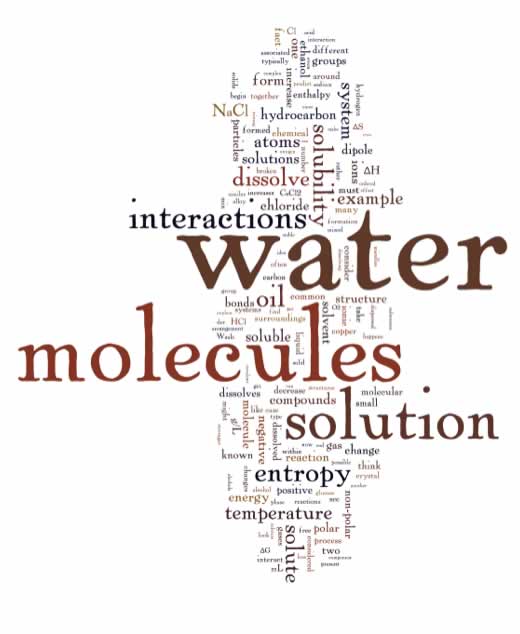Performance expectations:
- Interconvert between mass, moles, molarity (M), and volume for both molecular and ionic species.
- Draw the structure of molecules in solution (include solvent).
- Explain why temperature changes when a solution forms, in terms of the interactions that are broken and formed during the solution process (i.e. enthalic effects).
- Describe the solution process in terms of entropy changes for both solute and solvent.
- Construct models that explain how amphipathic molecules self-organize in water, including structural, energetic, and entropic factors involved.
- Explain the factors that lead to colloid and emulsion formation, rather than the formation of a “simple” solution.
